Located less than an hour from Lisbon, Sintra is an enchanting town full of palaces, castles, and natural beauty—and Quinta da Regaleira is perhaps its most mystical site.
This mysterious estate features cryptic symbols, architectural quirks, and hidden secrets. It’s far from your average historical landmark; instead of admiring paintings or ancient artifacts, you’ll spend your visit descending spiral staircases, exploring underground tunnels, balancing on submerged stepping stones, and speculating on the eccentric interests of its creator.
Considering all of this, Quinta da Regaleira might just be our favorite spot in Sintra. Here’s all the facts you need to know about Quinta da Regaleira, including its history, highlights, and practical tips for your visit. (And of course, if you are headed to Sintra, why not sign up for our fabulous VIP Sintra Tour from Lisbon where a local guide will tell you the fascinating stories behind its enchanting gardens and the mystical Initiation Well?)
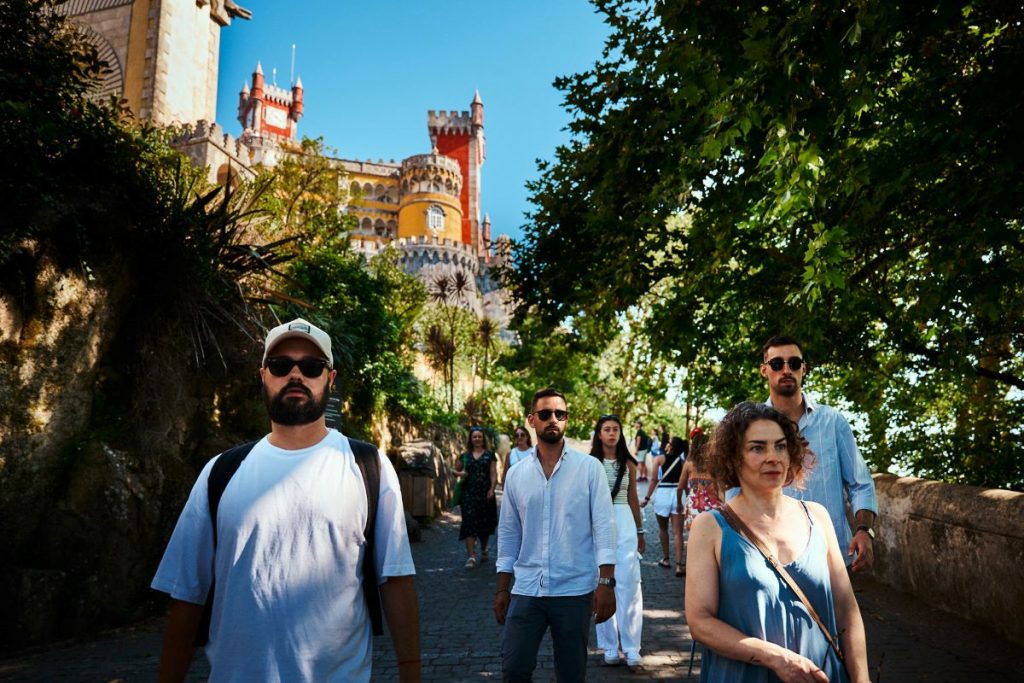
The intriguing history of Quinta da Regaleira
Unlike many important places in Portugal, Quinta da Regaleira has neither a royal nor a religious origin story. The land on which it was built belonged to a series of different owners from around 1700 onward. Its name is likely related to one of those owners, the Baroness of Regaleira; the word quinta refers to a country estate or manor.
The most notable owner, however, was António Augusto Carvalho Monteiro, nicknamed Monteiro dos Milhões (Monteiro the Millionaire). He was a wealthy businessman with eclectic interests including literature and entomology, as well as Freemasonry and the Knights Templar. After buying the property in the early 1890s, he set to work transforming it:
- Monteiro worked with the Italian architect and set designer Luigi Manini to construct not only the 5-story palace, where he lived, but also a series of fascinating features in the extensive gardens. Their work incorporated elements of various architectural styles, including Manueline, Gothic, and Renaissance, as well as apparent references to alchemy and the occult.
- After Monteiro’s death in 1920, the estate was passed on to his son and then sold several times before being acquired by the Sintra Town Council. It was carefully restored and opened to the public in 1998, and has since become one of the town’s most popular tourist attractions.
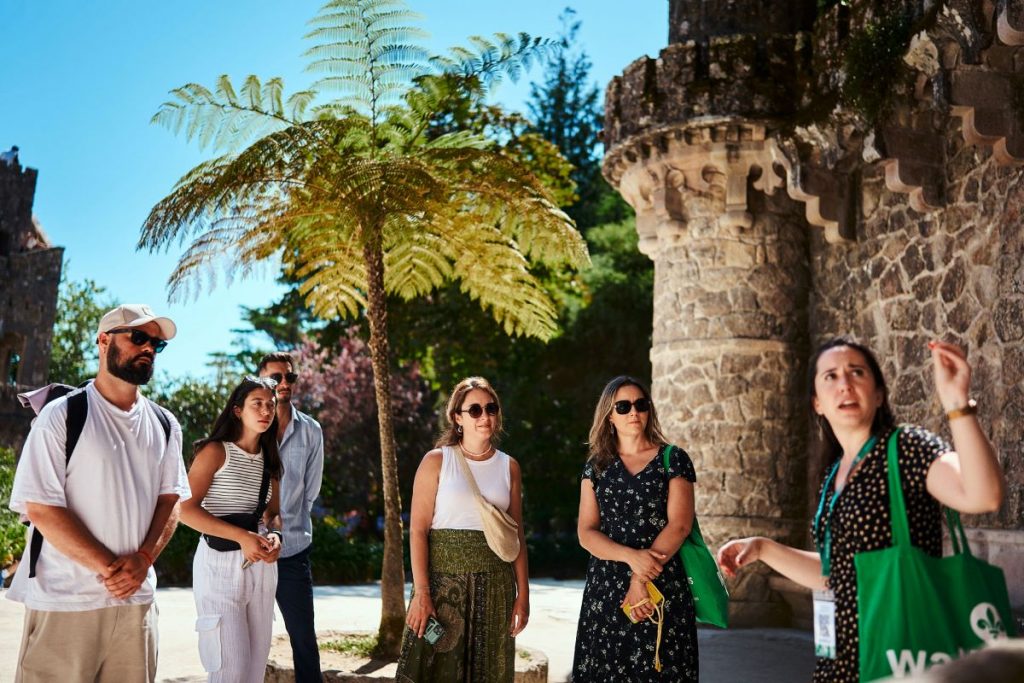
Iconic elements and highlights of Quinta da Regaleira
One thing we love about Quinta da Regaleira is the fact that there’s simply so much to see. Its winding pathways lead to all kinds of strange surprises, many of which are imbued with symbolism that might not be obvious at first glance.
Here are some of the most interesting features and a bit of background on their significance.
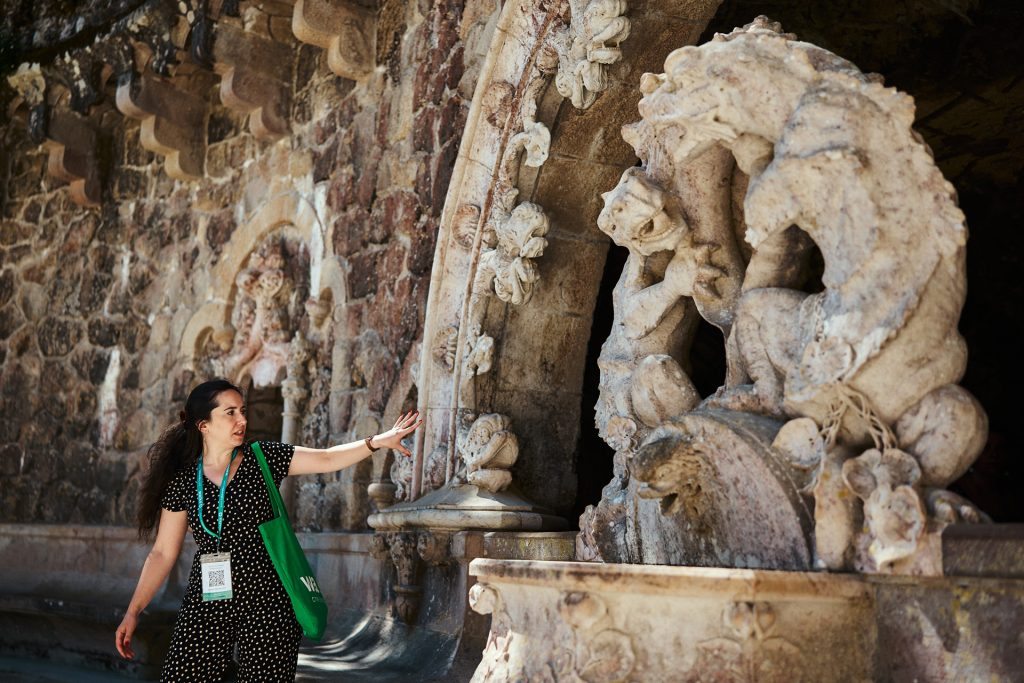
Poço Iniciático (Initiation Well)
The Initiation Well is probably the most well-known (no pun intended) part of the property. Despite its name, it’s actually a sort of inverted tower with a spiral stone staircase that leads deep underground.
Its name refers to the theory that it was used for Freemason initiation rituals, requiring participants to either ascend or descend the staircase while blindfolded.
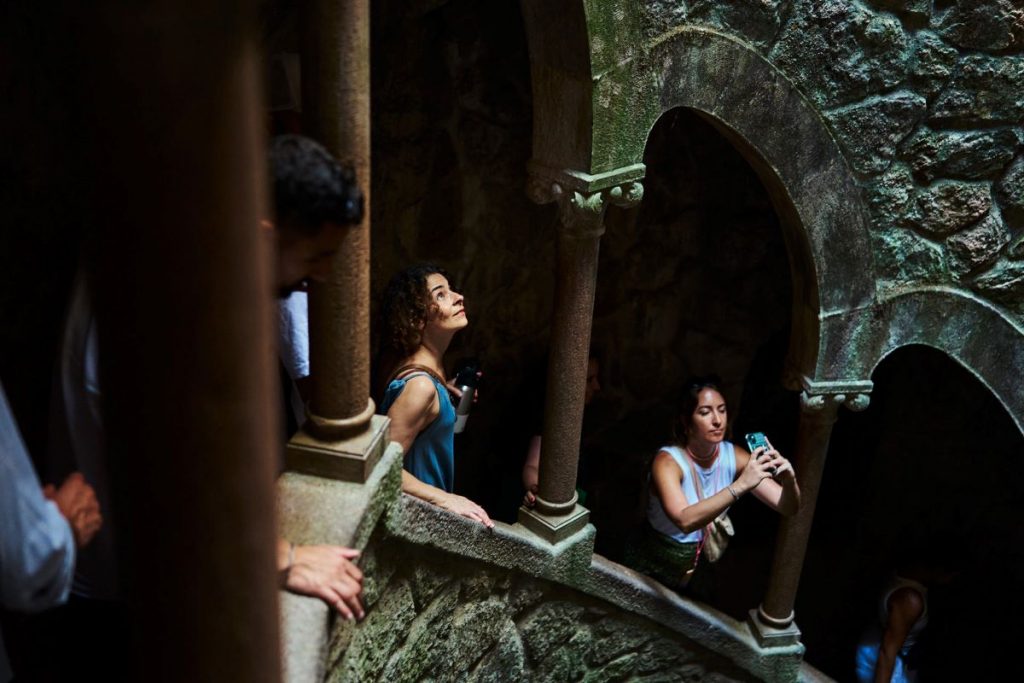
Poço Imperfeito (Unfinished Well)
As its name suggests, this second “well” was never completed, rendering it somewhat less impressive than the Initiation Well.
That said, its rough-hewn, moss-covered walls make it arguably even more eerie and interesting than its better-known counterpart.
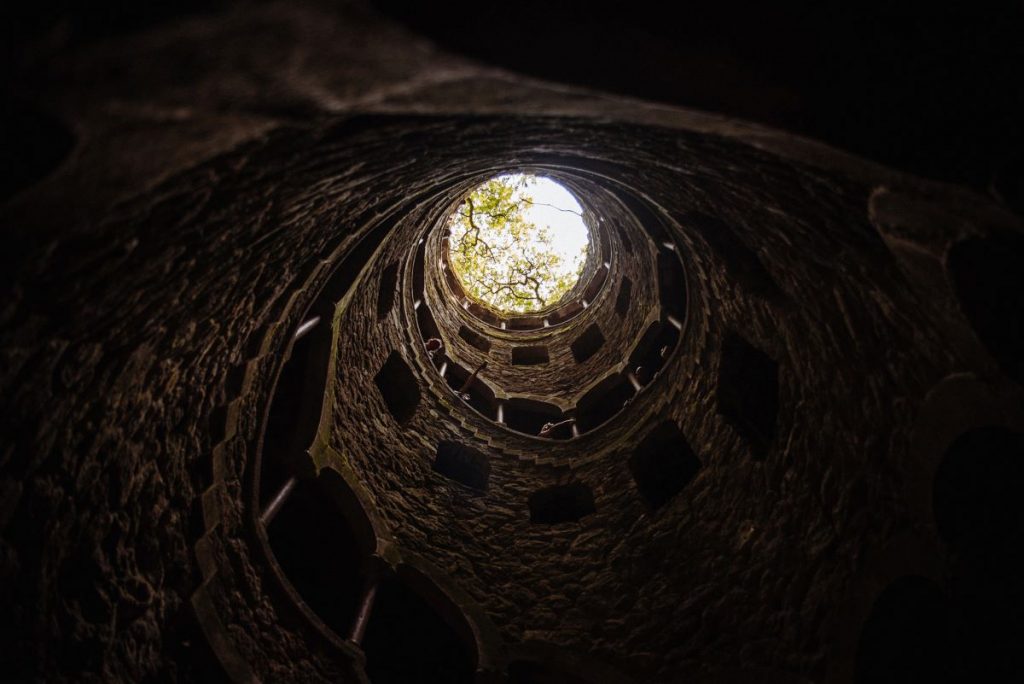
The Tunnels
Both the Initiation Well and Unfinished Well lead to a network of underground tunnels that connect various parts of Quinta da Regaleira.
These passageways are just slightly creepy and claustrophobic, with light strips placed along the edges to illuminate your path. Today visitors can enter the tunnels from the Initiation Well and emerge at the Gruta do Oriente.
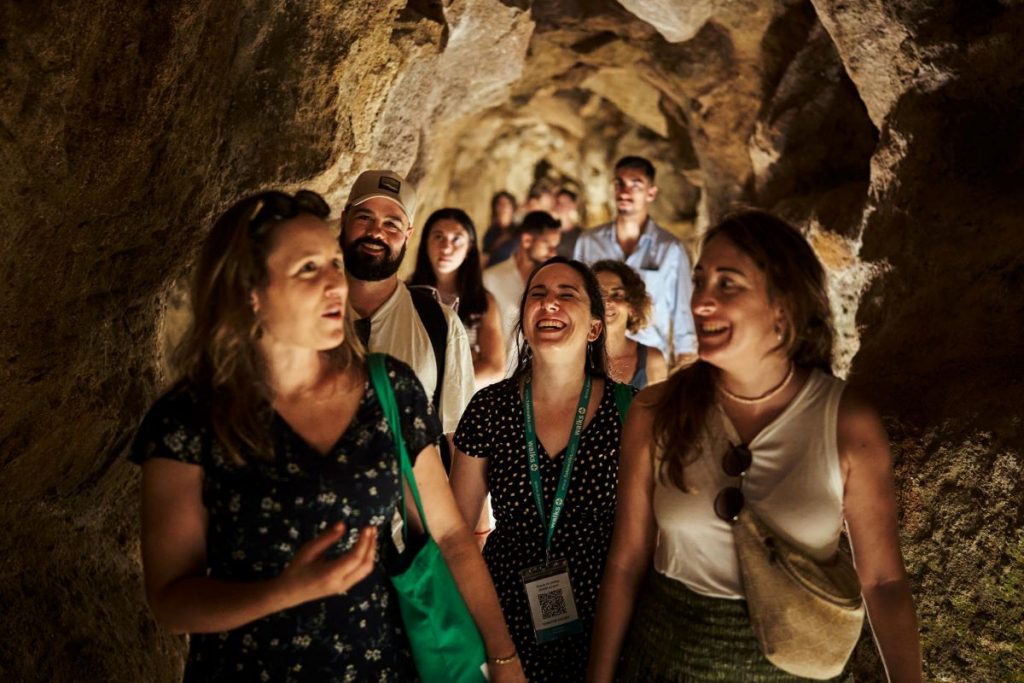
Traveler’s tip: Sintra is definitely one of the most popular cities to visit when in Lisbon, but there are many more! If you’re looking to get out and explore, check out our list of the Best Day Trips From Lisbon.
The Grottos
There are various grutas (grottos or caves) in Quinta da Regaleira.
The Gruta do Oriente (Eastern Grotto) connects to the tunnels and Initiation Well; the Gruta da Virgem (Grotto of the Virgin) is the most remote site on the estate; the Gruta da Leda (Leda’s Grotto) has a statue of a woman and a swan; and the Gruta do Labirinto (Labyrinth Grotto) is connected to a small lake.
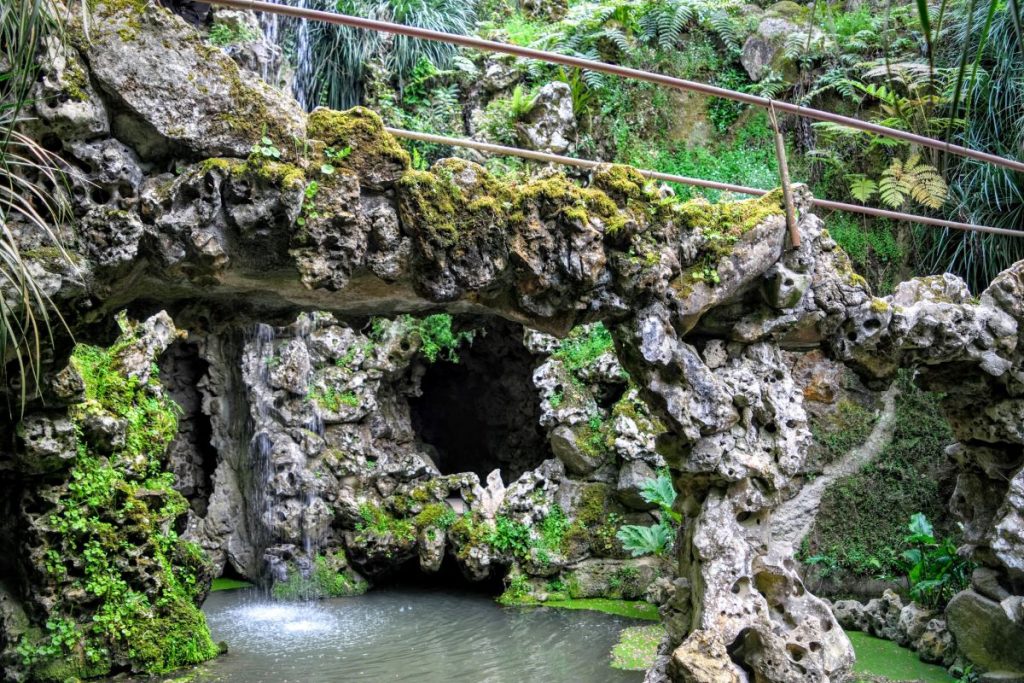
The Palace
The Palace is the main building on the property, with 5 floors and various rooms, some of which are open to the public.
One of the most interesting is the hunting/dining room, with its colorful mosaic floor and intricately carved stone fireplace. The outside of the palace is also impressive, featuring ornate details like gargoyles and other Gothic architectural elements.
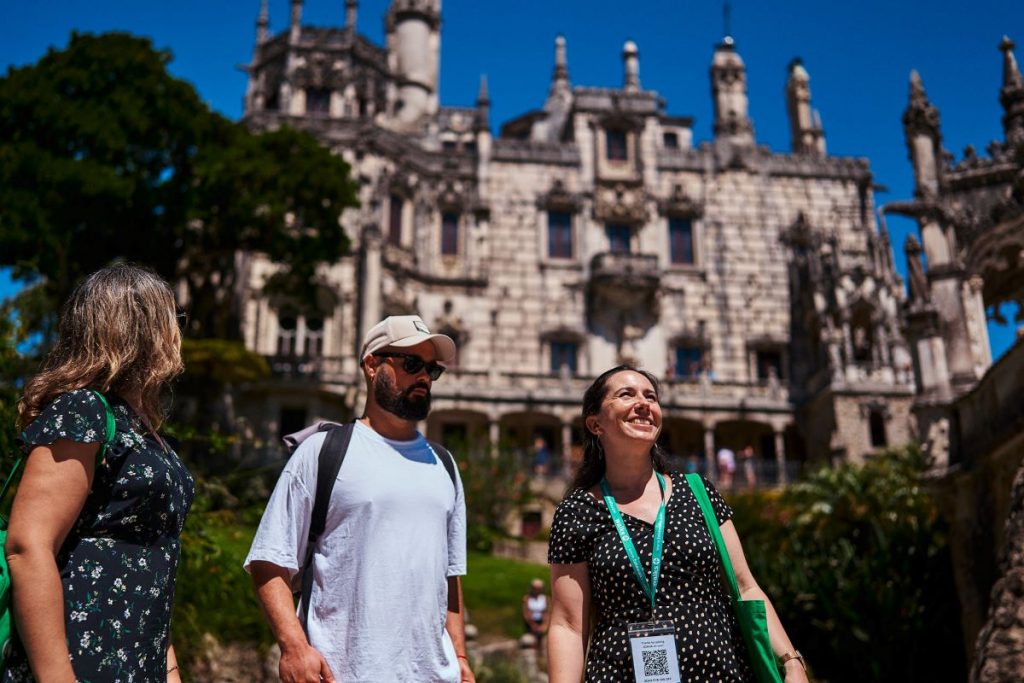
The Chapel
The chapel is a small building that mirrors the neo-Manueline style of the nearby palace. In addition to stained glass and classic religious imagery, there are also pentagrams and supposed references to the Freemasons and alchemy hidden in plain sight throughout its three levels.
An underground passageway connects the chapel’s crypt to the palace (it’s not open to the public).
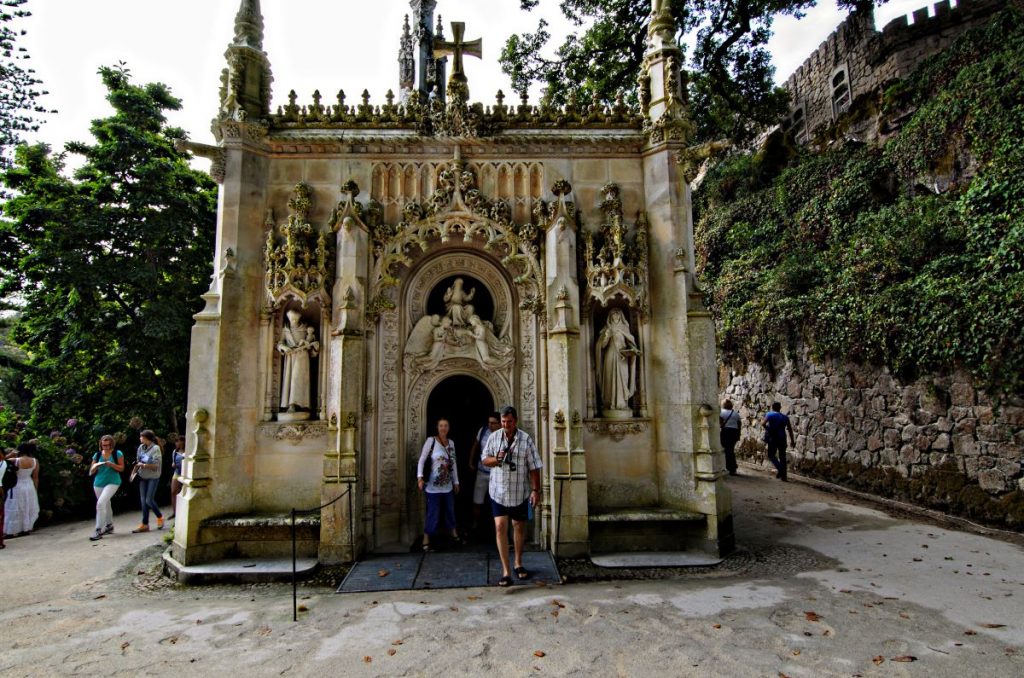
Quinta da Regaleira FAQ
How much time do I need to visit the site?
Quinta da Regaleira is the kind of place where it’s really worth taking your time. Set aside at least a couple of hours to discover all of its interesting details, many of which require you to slow down and look closely to fully appreciate them.
We suggest arriving on foot; it’s about a 10-minute walk from the town center and a 20-minute walk from the train station.
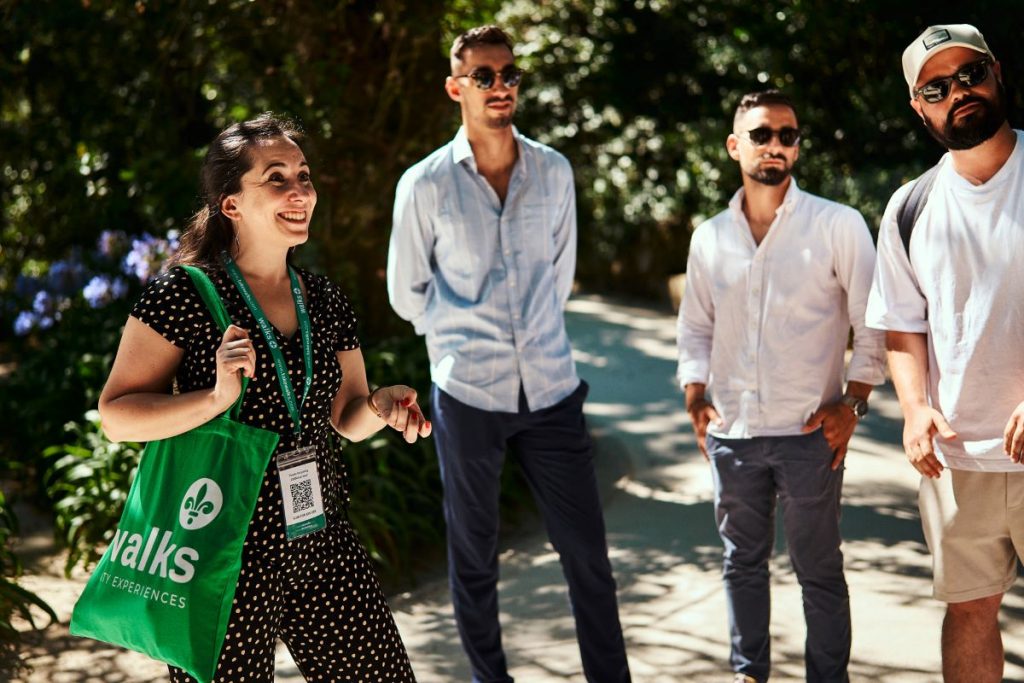
Should I visit the Pena Palace or Quinta da Regaleira?
If you’re trying to decide between visiting this site or the Pena Palace, keep in mind that Quinta da Regaleira is more eccentric and whimsical, while the Pena Palace has more historical significance and impressive views—so it really just depends on your interests and preferences.
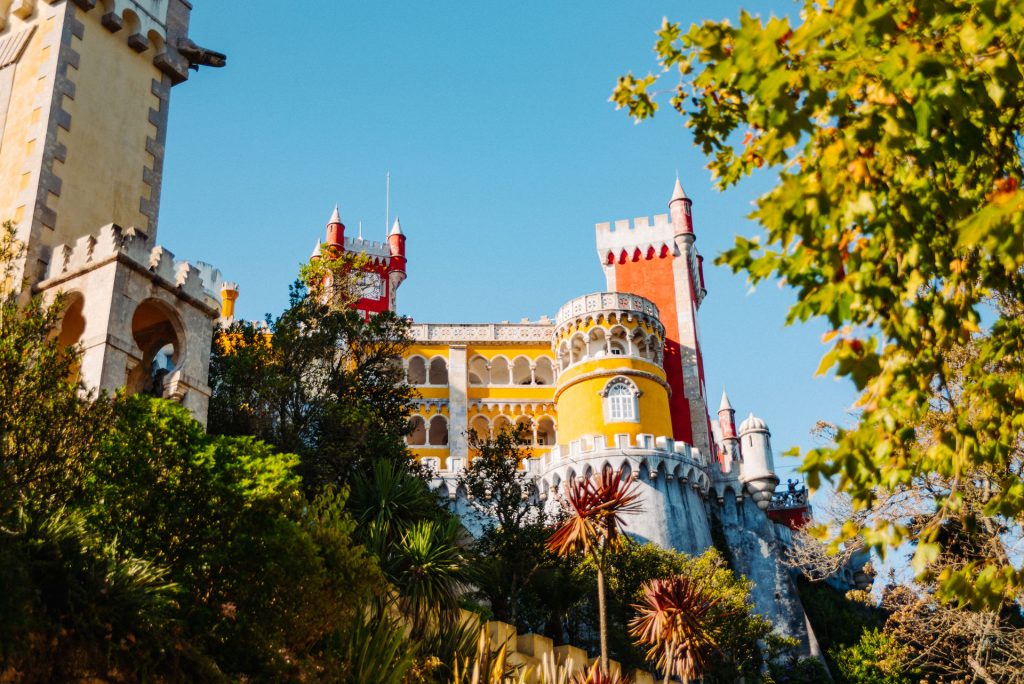
What time is the site open?
Quinta da Regaleira is open every day from 10 a.m. to 6:30 p.m. from October to March and from 10 a.m. to 7:30 p.m. from April to September.
You can buy tickets when you arrive or from the official website. There are audio guides available, and you can download a map here.
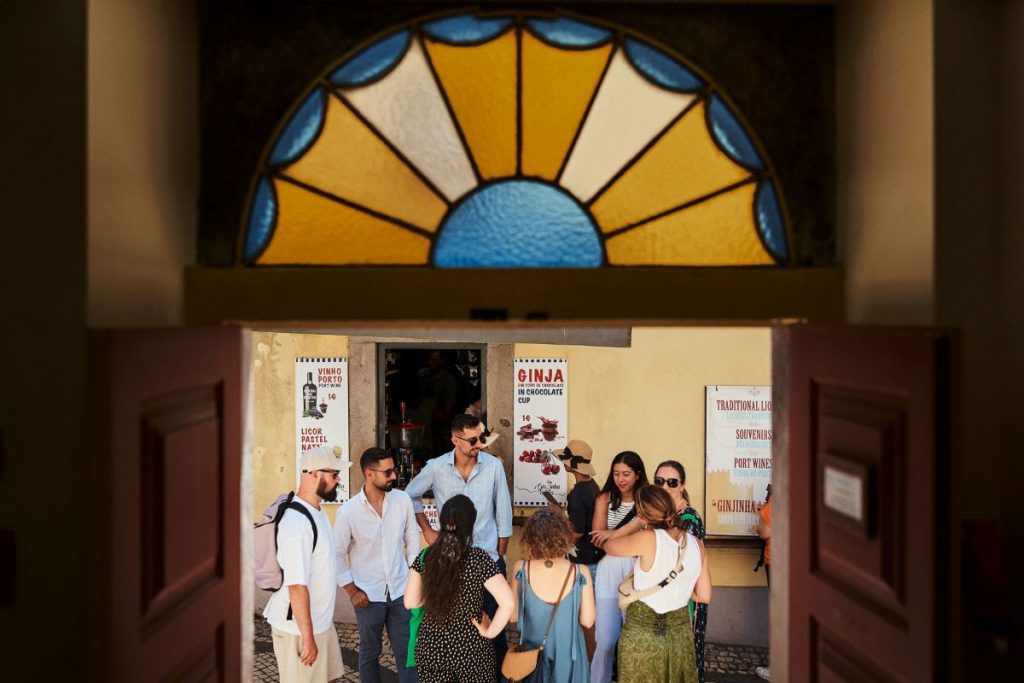
What else can I see at Quinta da Regaleira?
There are many other notable sites to explore. If you don’t have time to see every site, choose the ones that sound most interesting and head there first—you’ll pass by plenty of other striking spots along the way.
A few other key elements include:
- Portal dos Guardiões (Portal of the Guardians): An intricate stone structure featuring two towers and a central statue inspired by Greek mythology.
- Lago da Cascata (Waterfall Lake): A green lake surrounded by stone structures, with a waterfall, small stepping stones, and a hidden entrance to the tunnels.
- Torre da Regaleira (Regaleira Tower): A small stone tower offering fantastic views.
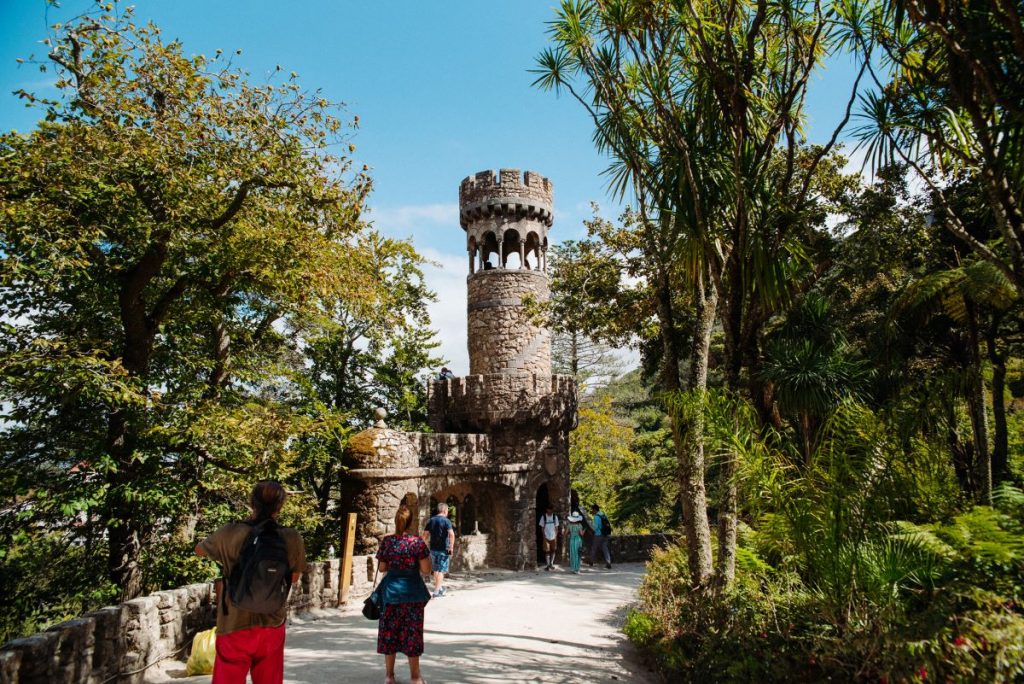
Trying to decide between visiting this site or the Pena Palace? Now you don’t need to! Join us and uncover the fairy-tale charm of Sintra and magical Quinta da Regaleira on our VIP Sintra Tour from Lisbon. You’ll enjoy exclusive access to Pena Palace, visit Quinta da Regaleira’s gardens, and hear insider stories for a truly unforgettable day!
